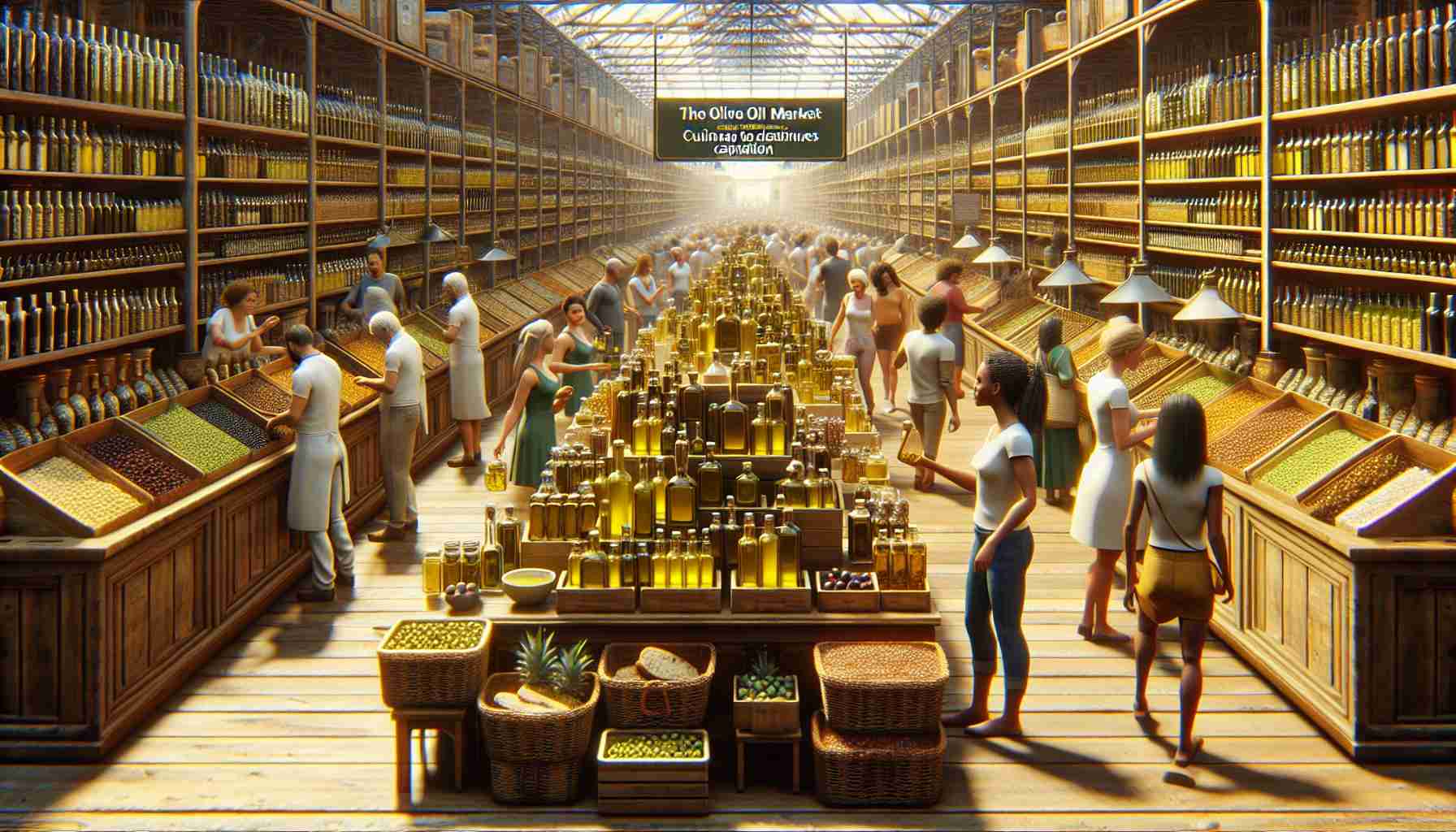The olive oil industry is experiencing a whirlwind of activity, with prices fluctuating and stakeholders eagerly watching for the next big trend. The recent shift in prices has sparked conversations around the world, prompting experts to reevaluate strategies and consumer behaviors.
Gone are the days of unprecedented drops in olive oil prices, as the market landscape evolves and adapts to new challenges and opportunities. Stakeholders are now looking towards innovative solutions, urging for collaborations between government entities and industry players to revitalize consumer interest in this golden liquid.
While some regions grapple with climate-related setbacks, others are gearing up for a new era of production and consumption. The emphasis on sustainable practices and water conservation are at the forefront of discussions, highlighting the importance of proactive measures in the face of uncertainty.
Despite the hurdles faced by olive oil producers, there is optimism on the horizon. Projections point towards a resurgence in production levels, paving the way for a potential return to stability in pricing. As the industry recalibrates and adjusts to new norms, stakeholders are advised to remain agile and responsive to market dynamics.
Across various markets, from Spain to Italy and beyond, olive oil prices continue to reflect the intricate balance of supply and demand. The quest for equilibrium between producers, industry players, and consumers remains ongoing, showcasing the resilience and adaptability of the olive oil market.
The olive oil industry is a versatile market that not only caters to culinary preferences but also boasts a range of health benefits that continue to captivate consumers worldwide. As consumers become increasingly aware of the advantages of incorporating olive oil into their diets, demand for quality products remains steady, driving the market forward.
One key question that arises in the olive oil market is regarding the authenticity of the product. With issues of fraudulent labeling and misrepresentation prevalent in the industry, consumers are often left wondering about the origins and quality of the olive oil they purchase. It underscores the importance of transparency and traceability in the supply chain.
Another significant challenge associated with olive oil production is the impact of environmental factors on crop yields. Climate change poses a threat to olive groves in traditional growing regions, leading to fluctuations in production levels and potentially affecting the overall market stability. Adapting to these challenges requires sustainable agricultural practices and investments in research and development.
Advantages of the olive oil market include its versatility in culinary applications, ranging from dressings and marinades to cooking oils. The health benefits associated with olive oil, such as its high levels of monounsaturated fats and antioxidants, have also contributed to its popularity among health-conscious consumers.
On the flip side, one disadvantage of the olive oil market is the susceptibility to price volatility. Fluctuations in production levels, global demand, and external factors like political instability can lead to price spikes that may impact both producers and consumers. Finding a balance between stability and competitiveness remains a constant challenge in the industry.
For more insights on the olive oil market trends, pricing dynamics, and consumer preferences, visit Olive Oil Times to stay informed and engaged with the latest developments shaping the industry.
